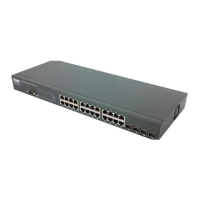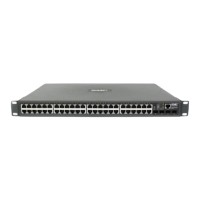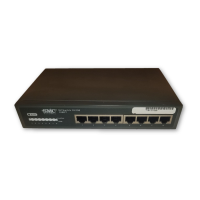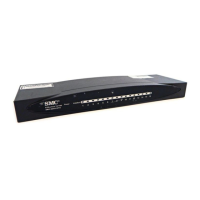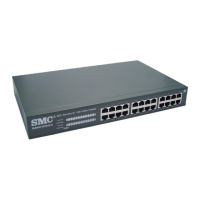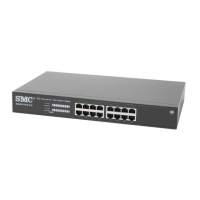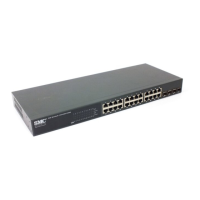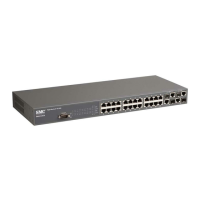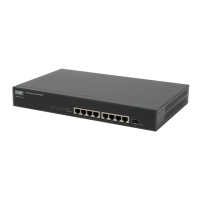Spanning Tree Algorithm Configuration
3-105
3
Displaying Global Settings
You can display a summary of the current bridge STA information that applies to the
entire switch using the STA Information screen.
Field Attributes
• Spanning Tree State – Shows if the switch is enabled to participate in an
STA-compliant network.
• Bridge ID – A unique identifier for this bridge, consisting of the bridge priority and
MAC address (where the address is taken from the switch system).
• Max Age – The maximum time (in seconds) a device can wait without receiving a
configuration message before attempting to reconfigure. All device ports (except
for designated ports) should receive configuration messages at regular intervals.
Any port that ages out STA information (provided in the last configuration
message) becomes the designated port for the attached LAN. If it is a root port, a
new root port is selected from among the device ports attached to the network.
(References to “ports” in this section mean “interfaces,” which includes both ports
and trunks.)
• Hello Time – Interval (in seconds) at which the root device transmits a
configuration message.
• Forward Delay – The maximum time (in seconds) the root device will wait before
changing states (i.e., discarding to learning to forwarding). This delay is required
because every device must receive information about topology changes before it
starts to forward frames. In addition, each port needs time to listen for conflicting
information that would make it return to a discarding state; otherwise, temporary
data loops might result.
• Designated Root – The priority and MAC address of the device in the Spanning
Tree that this switch has accepted as the root device.
- Root Port – The number of the port on this switch that is closest to the root. This
switch communicates with the root device through this port. If there is no root
port, then this switch has been accepted as the root device of the Spanning Tree
network.
- Root Path Cost – The path cost from the root port on this switch to the root
device.
• Configuration Changes – The number of times the Spanning Tree has been
reconfigured.
• Last Topology Change – Time since the Spanning Tree was last reconfigured.
These additional parameters are only displayed for the CLI:
• Spanning tree mode – Specifies the type of spanning tree used on this switch:
- STP: Spanning Tree Protocol (IEEE 802.1D)
- RSTP: Rapid Spanning Tree (IEEE 802.1w)
- MSTP: Multiple Spanning Tree (IEEE 802.1s)
• Priority – Bridge priority is used in selecting the root device, root port, and
designated port. The device with the highest priority becomes the STA root device.
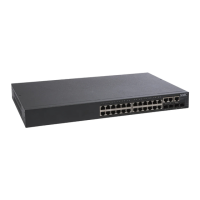
